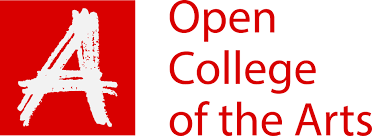Pictorial Effect in Photography: Being Hints on Composition and Chiaro-Oscuro for Photographers by Henry Peach Robinson
- Classic Reprint Series – Published by Forgotten Books, London, 2012.
- Reprint of the American edition published by Edward L. Wilson, Philadelphia, 1881.
Originally published in 1881, Henry Peach Robinson describes what makes a good photographic composition. He does stress that there are many ways to combine ideas to make a good image. However, what makes this book different to all ‘How To’ photography books is that he compares the good with the bad and explains why. There are no images in the book, just sketches. Interestingly it is probably due to not wanting to include bad images or offend some photographers that modern day ‘how to’ books steer clear of explaining the bad.
Robinson was an early practitioner who wanted photography to be accepted as art by emphasising the attributes and unique properties that photography provided. He encouraged photographers to be creative and not just use it to capture the object as it was. I was surprised how valid the points he made then are still as valid today. The technology has changed but the basics of composition were very well understood.
I have included some references to give a flavour of what the book aims to achieve and include some of his thoughts and opinions.
p1. The opening paragraph is as true today as it was then. ‘Nine out of 10 photographers are ignorant of art.’
p3. Discusses how it was alleged that art had nothing in common with photography. Felt by many that photographs can only project things as they are. Whereas art transfigures and glorifies by use of ‘poetic treatment’. HPR argues that photographs offered a number of opportunities to photographers to interpret a scene. Their eye, their viewpoint, their glass (lens), time of day, and adding subjects.
p6. He describes artistic sight – the knowledge of what is picturesque and beautiful. He subscribes to the need to study how these desirable qualities are produced. Effects of character of form, light and shade. ‘To a photographer, the addition of colour would only be a complication’. Szarkowski repeated this view in 1976 in ‘The William Eggleston Guide’.
p8. Seeing is a habit. Not only are things unnoticed, they are also unseen. Need a trained eye. ‘eyes open, minds blind’.
p11. ‘Art should be a guide only to the study of nature’.
p28. ‘In photography there is no colour to distract the attention from the design’. Therefore I conclude that more skill is required to capture images in colour. I partially agree with HJR when he says that an image should fully pronounce its own meaning and there should be nothing left for verbal explanation. However, I think there is room in art for ambiguity and unintentional meanings. HJR believed ‘everything must have a meaning, and the meaning must be the object of the picture. My response is ‘Can the ‘object’ be an unanswered question?
p31.’it is of little use endeavouring to teach a man to write poetry until he has learned to spell.’
After the opening chapters he then moves on to specific subjects such as capturing skies, the use of variation and repetition, plus some later on chapters on portraiture and poses of individuals and groups.
All in all these chapters make a useful reference and are also entertaining due to the use of 19th century writing.
